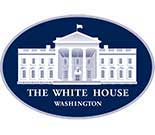|
|
 |
|
The
views expressed
on this page are soley those of the author and do not
necessarily
represent the views of County News Online
|
 |
The White House
I may never get
to stand on the podium
It was New Year's Eve in 2009 when my helmet saved my life.
Training for the Winter Olympics in Utah, I was at the top of
competitive snowboarding when I suffered a life-threatening traumatic
brain injury that I'm still recovering from to this day. And while I
can never snowboard competitively again, I hope to be a voice for the
millions of Americans who grapple with diseases of the brain.
Until my injury, I didn't spend too much time thinking about my brain,
but in the last few years, I've learned a lot about the engine that
drives our thoughts, emotions, and actions.
I've learned that in my battle to recover from this devastating injury,
I am not alone. Researchers estimate that around 100 million Americans
suffer from brain disorders at some point in their lives. From
Alzheimer's to autism and ALS all the way to traumatic brain injury,
post-traumatic stress disorder, and chronic depression, diseases of the
brain are not only catastrophic, they are common.
That's why the President's BRAIN Initiative -- an all-hands-on-deck
effort to understand the human brain and enable the tools, techniques,
and technologies that can improve scientists' ability to diagnose,
treat, and prevent neurological diseases -- is personal for me.
Since my injury, I've learned that the human brain remains one of the
greatest mysteries in science. Decades of neuroscience have revealed
much about how the brain works, but the great majority of the brain's
activity, involving about 100 trillion neural connections, remains
uncharted.
That's changing quickly. Since the President announced the BRAIN
Initiative last year, the research community, federal agencies,
foundations, patient advocacy groups, private research institutes,
companies, scientific societies, and individual scientists have
committed more than $300 million to this bold effort to capture a
dynamic image of the human brain, similar to the one that mapped the
human genome.
The goals of the BRAIN Initiative are ambitious, but they're achievable.
Imagine if no family had to grapple with the helplessness and heartache
of a loved one with Parkinson's, or TBI, or PTSD. Imagine if
Alzheimer's, or ALS, or chronic depression were eradicated in our
lifetime. Imagine if we played a role in those breakthroughs.
That's why I've worked so hard on connecting, educating, and empowering
around brain health, and to tell the story about how much the brain can
improve, adapt, heal, and grow. And that's why I'm so excited to lend
my voice to these efforts to help catalyze the next generation of
treatments for brain diseases. Though my voice may be more public than
most, I know that so many Americans have loved ones that have battled
brain disorders just as I have.
I may never get to stand on the Olympic podium, but I'm thrilled to
stand with the scientists and students, researchers and citizens on the
edge of the next great frontier -- unlocking and understanding the
three pounds of matter that sit between our ears.
Sincerely,
Kevin Pearce
Carlsbad, California
|
|
|
|

